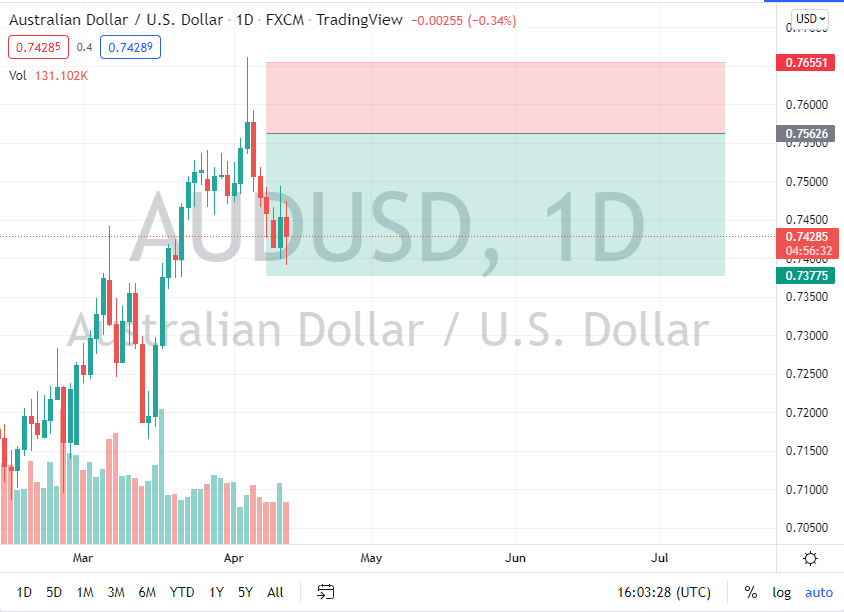Top Forex Brokers
What is Forex Risk Management?
Forex risk management is the practice of protecting your account. It is the most important job a trader has when it comes to trading because if you blow up your account, it is over.
You cannot be profitable over the long run if you are taking too much risk because if you are pushing your luck, your luck will eventually run out. The number one job in trading is to not blow up your account.
Risk management in Forex means using things like stop loss orders, proper position sizing relative to your account size, and understanding whether your strategies perform well over the longer term. The ability to use these readily available tools will have an outsized effect on your longer-term profitability. The professional trader does not “swing for the fences” every time they put on a position. Rather, they understand that growing your account over time and in a consistent manner is the route to success.
Successful traders understand that there is no such thing as a “sure bet,” meaning that you are playing probabilities.
You must keep in mind that anything can happen at any time, such as a random headline that sends the market screaming in one direction or another. In that scenario, your Forex risk management becomes crucial, keeping your losses manageable.
What are the Risks of Forex Trading?
There are inherent risks in Forex trading, as there are in all markets. The major risks are as follows:
- Leverage can make small market movements dangerous. The leverage that Forex trading allows means that small market movements can be extraordinarily dangerous. If you are trading 50, 100, or even 200 times leverage, you need to keep in mind that both gains and losses will be amplified.
- Forex markets have multiple inputs. The Forex markets are driven by many factors, including geopolitical, economic, and interest-rate differentials. Because of this, the prediction of exchange rates takes quite a bit of work and can be very difficult at times.
- Volatility. Forex markets can be extraordinarily volatile, and therefore it can cause a lot of headaches for a trader at times. However, it is the same volatility that can make Forex very profitable if you get the direction of the trade correct.
- Provider risks. You must pick a reputable and regulated Forex broker, as there have been brokers in the past that have become insolvent. In that situation, you may or may not get your money back.
How to Manage Risk in Forex Trading
Now that you understand some of the major risks involved in trading Forex, it is time to start talking about how you can practice risk management in your Forex trading so that you can have a long and fruitful trading career. Here are 5 steps you can take which will make a significant difference to your trading account:
Risk/Reward Ratio

An Appropriate Risk to Reward Ratio on a Short Trade
It cannot be overstated just how important the idea of a risk to reward ratio in your trades is in Forex risk management. This is because you will have some losing trades, so you need to make sure that your average loser in smaller than your average winner.
To accomplish this, most traders look for at least a 1 to 2 ratio. This means that for every $1 they are risking, they are aiming to gain $2. Other traders will even go as far as 1 to 3, or even further.
The benefit of using a skewed risk to reward ratio in favor of reward is that you do not have to be right all or even most of the time to make a profit over the longer term. If you are correct just 50% of the time using a 1 to 2 ratio, you will automatically be extremely profitable. Furthermore, if you use an even larger risk to reward ratio, your success rate on trades becomes less crucial, although you then start to face the problem of lengthy drawdowns.
A lot of this comes down to psychology. You must be willing to accept losses when it comes to trading, but if you are aiming for a 1 to 5 ratio for example, you need to be comfortable taking many losses in a row. This is because the markets are volatile, and to gain five units for every one unit risked, you are going to see a lot of trades go against you.
The best approach is not to have fixed profit targets, but to monitor the progress of your trades and let winners run and cut losers short.
This way, you can hopefully find a balance between taking much of what the market offers, while still staying in the big winners until they run out of momentum.
Using Stop Loss and Limit Orders
You absolutely must use hard stop loss orders when trading. This is when you recognize that the trade has gone against you to the point where you must cut your loss. Make sure that your stop loss order makes sense, by placing it at a level which if reached proves that your analysis for entering the trade was incorrect. You should also make sure that your stop loss is relatively reasonable as far as size is concerned.
Remember that we are trading in a 24-hour market, and things can happen overnight if you leave a position open. This is one of the main reasons to use a hard stop loss order: for protection. The short-term trader needs to use a stop-loss order as well because an unexpected piece of news could have the market ripping against you rather quickly. There is no situation where using a hard stop loss order is a bad idea.
As far as limit orders are concerned, this comes down to your trading style. If you know where you want to take profit in a trade, then you can place a limit order. However, trend traders and swing traders do not necessarily use them, because they are trying to stay in the trade for days, weeks, or even months. Using a limit order is not necessarily a bad idea, but if you are a longer-term trader, you may wish to forgo it.
Understand and Control Leverage
Understanding leverage and learning how to control it will be crucial to your success. The most important thing you can keep in mind is that even though you probably have massive leverage available from your broker, you do not have to use it all.
You should understand that if you trade with 100 times leverage, your account will be wiped out by a 1% price movement against you. Such movements happen in the markets every day.
By controlling your leverage, you can give your trade much more room to move, and perhaps more to the point, you will not suffer outsized losses.
Use Appropriate Position Sizing
Just like using too much leverage, it is important not to risk too much per trade. You must accept that for most traders or automated trading strategies, having a streak of 20 or even more losing trades is quite likely to happen within a year or more. If you are risking as much as 10% of your account equity per trade, where will that leave your account by the end of such a streak? Remember also that once your account reaches a 20% drawdown, the profit required to make it back increases exponentially beyond 20%. If you lose 50% of your account, you then must double what you have left just to get back to square one.
Another thing you can do here is size every trade as a percentage of your account equity, not as a fixed cash amount. This way, at least in theory, your account can never reach zero. It is a powerful tool for limiting your losses and expanding your winners, as your trade sizes shrink during losing streaks and expand during winning streaks.
Use a Trustworthy Forex Broker
Traders get so focused on trading that they sometimes forget that an unscrupulous broker can effectively blow up the account of even the best trader, simply by going bankrupt without protection or segregation, or by refusing to send requests for withdrawals. You can mitigate this risk by choosing a regulated Forex / CFD broker with a good reputation that is regulated in a strong jurisdiction. Even if the broker is honest, there is a risk they can go bankrupt, and you might face some delay or problems in getting your money back. If you are trading with a large sum, you should consider splitting your deposits between two or more brokers to mitigate this risk.
Bottom Line
Surprisingly, risk management in Forex is completely within your control. By taking just a handful of steps, you can greatly increase your chances of not only survival but profitability. The ability to practice risk management is one of the few things that you can control. After all, once you place a trade, the market will do whatever it wants to. However, if you are prepared to protect your account, you can thrive over the longer term.
Make sure that you are always aiming for more than you are risking, that you are risking an appropriate amount, and that you know that your system performs over the longer term.
By back testing your trading strategies over long-term historical price data, you can know whether it tends to be profitable. The ability to accept that we are trading probabilities and not certainties means that these things are crucial to pay attention to.
FAQs
How do you manage risk in Forex?
The most important thing to make sure you are paying attention to is position size. Another thing that you can do is to make sure that you backtest your system, and make sure it has historically been profitable.
Can I risk 5% per trade?
This is reckless trading because almost all trades have little more than a 50-50 chance of working, and if you lose, you will need to make that back. However, what happens if you lose twice? You are down 10%, which means you will have to make 11% just to get back to “break-even.”
Why is Forex high risk?
It is the high leverage that is offered which can make Forex trading so risky. Leverage means that you can take control of larger positions, which can lead to larger losses. You don’t have to use high or even any leverage.
How important is risk management in Forex?
Without risk management, you will almost certainly blow up your account. It is paramount that you practice risk management in Forex, or your chances of success will be greatly diminished.
How do you avoid losses in Forex trading?
There is no way to completely avoid losses in Forex trading, but you can take care of risk, and make sure your average win is bigger than your average loss.
What are the disadvantages of Forex trading?
Most disadvantages involve the leverage involved. This is a bit ironic because it is what attracts most traders. The other thing is the 24-hour nature of the markets, as you may miss the occasional move while asleep.
Is Forex trading gambling?
It can be, but it comes down to whether you practice risk management. The sizing of your trades is crucial. If you trade in huge positions, you will find that trading Forex is like gambling.
